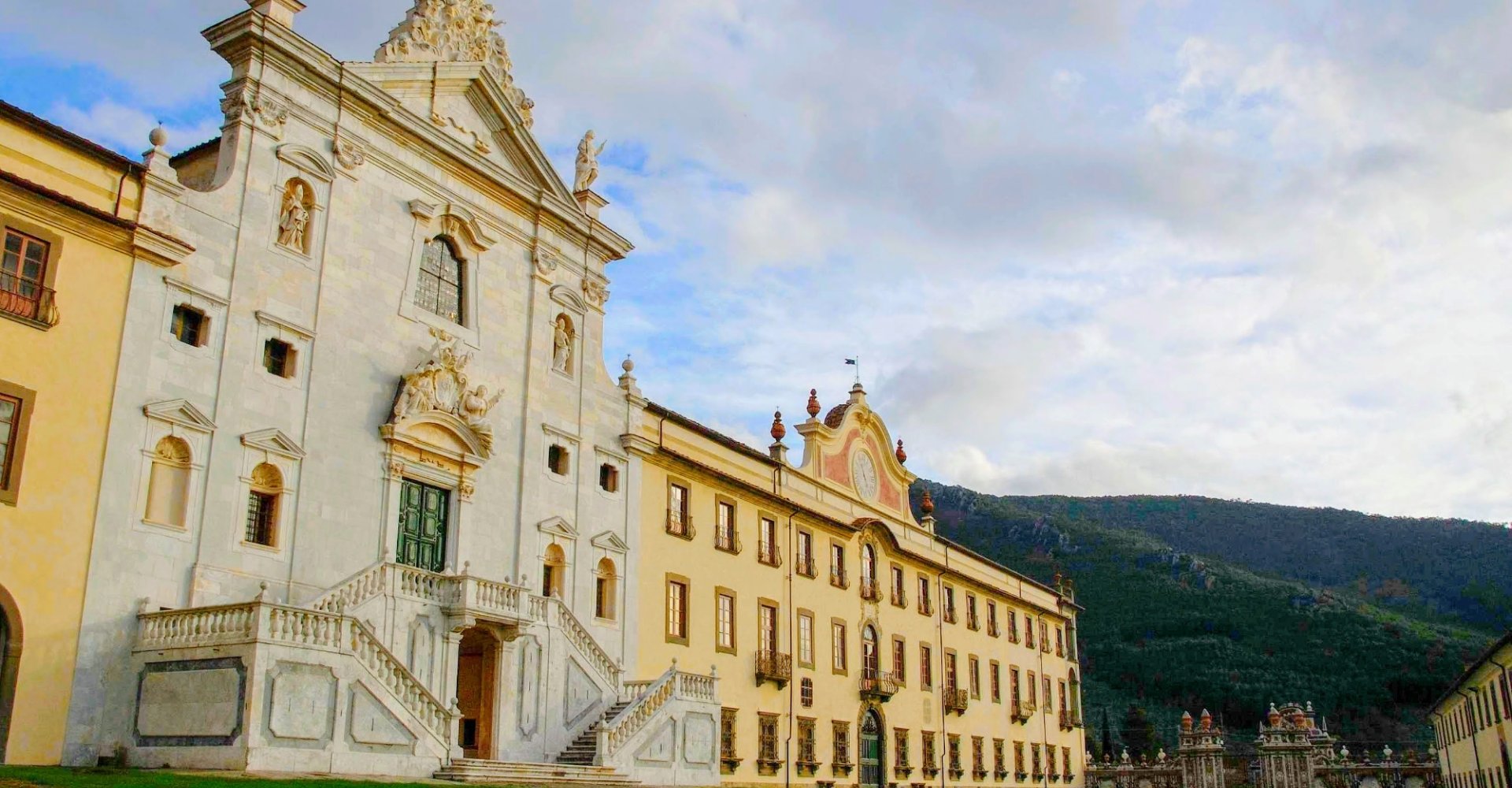Today, Calci’s town hall is the Parish Church of SS. Giovanni ed Ermolao, built at the end of the 11th cenury in a Romanesque-Pisan style, surrounded by terraces of olive groves and overlooked by Monte Serra.
On clear days there’s a stunning view that runs from Pisa all the way to the Tuscan Archipelago islands.
Once in the area it’s absolutely worth visiting the renowned Certosa Monumentale and the Museum of Natural History and the University of Pisa Territory.
Founded in the 15th century, thanks to a bequest from an Armenian merchant, the Certosa is a monumental complex made in the Baroque style, comprising a large courtyard dedicated to community life and encounters with the outside world, as well as a series of buildings that contain the cells, gardens and rooms dedicated to the Carthusian order.
Home to Carthusian monks until the end of the 1970s, the Certosa is now open to visitors. Among the main attractions are the monks’ cells (each with a small garden and workshop for manual work), the cloisters, the loggias, the refectory for Sunday lunches, the guesthouse for the Grand Duke’s visits, the historic pharmacy for the production and sale of medicines, and the library which is home to numerous rare manuscripts and ancient texts.
From 1979 the western part of the complex has been in use thanks to the University of Pisa, which opened the Museum of Natural History – among the oldest in the world – there. Inside are paleontological, mineralogical and zoological collections, alongside a gallery of cetaceans (among the largest in Europe), new rooms dedicated to dinosaurs and an important freshwater acquarium.
There’s a fortress holding a dominant and strategic position on the Pisan Mountains, which has been at the forefront of the area’s history and the long war between Pisa and Florence for centuries. It’s known as the Rocca della Verruca, and was once part of a fortifications system which shares a communication code based on sheets, smoke, banners and artillery shots.
Built in the 13th century on a rocky spur on top of a previous fortification, it’s been modified and enlarged several times and remained an active military structure until 1503, when Pisa fell.
